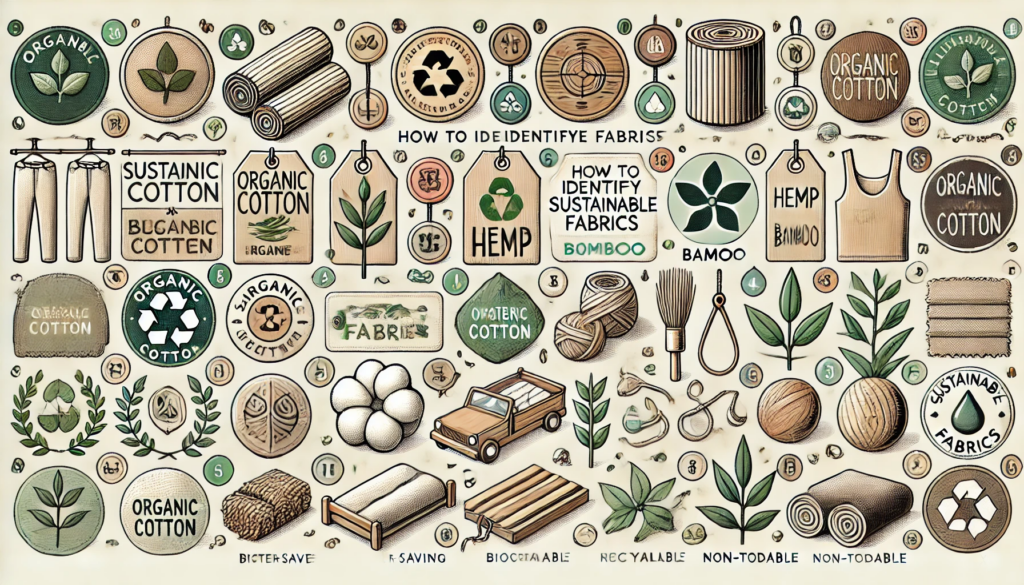The fashion industry is one of the most polluting in the world. Fortunately, the demand for sustainable fabrics is driving new innovations. This guide will show you how to identify these fabrics and make conscious choices. You will learn about the characteristics and benefits of these materials, as well as the difference between natural and synthetic fabrics.
You will also learn about examples of sustainable fabrics, such as orange fiber and organic cotton. Additionally, you will understand the impact of sustainable materials on the economy and how we can promote their use. This can change the consumer behavior towards these products.
Key Takeaways
- Understand the benefits of sustainable fabrics and their importance in the fashion industry.
- Differentiate between natural fibers and synthetic fibers, identifying sustainable options.
- Learn about examples of sustainable fabrics, such as orange fiber, banana fiber, and organic cotton.
- Understand the challenges and opportunities related to sustainable materials in the global economy.
- Learn how to increase availability and change consumer behavior regarding sustainable fabrics.
What are Sustainable Fabrics
Sustainable fabrics are products that respect the environment. They are made conscientiously, without harmful chemicals and with less water. They use organic or recycled materials, natural dyes, and care for all stages of the process, from creation to disposal. This helps reduce environmental damage.
Characteristics of Sustainable Fabrics
Sustainable fabrics have important characteristics:
- Production with organic or recycled inputs
- Use of water-based dyes
- Concern for the entire production chain, from manufacturing to disposal and recycling of waste
Benefits of Sustainable Fabrics
The benefits of sustainable fabrics are numerous:
- Reduction of environmental impact
- Promotion of conscious consumption
- Support for movements like slow fashion and veganism
With increasing awareness about sustainability, sustainable fabrics are gaining popularity. They are a smart choice for those who want to improve the world with their lifestyle.

“The use of sustainable fabrics is an effective way to reduce our environmental impact and promote a greener future.”
Natural Fibers vs Synthetic Fibers
Textile fibers are divided into natural, synthetic, and artificial categories. Each group has unique characteristics that affect sustainability and environmental impact. These differences are crucial for fabric selection.
Types of Natural Fibers
Natural fibers come from renewable and biodegradable sources, such as plants and animals. Among the most popular natural fibers are:
- Cotton
- Wool
- Linens
- Hemp
- Silk
These natural fiber fabrics are appreciated for being comfortable, breathable, and high-quality. They also have a lower environmental impact.
Types of Synthetic and Artificial Fibers
Synthetic fibers are made from fossil fuels. Artificial fibers are derived from cellulose but undergo chemical processes. Some of the most used synthetic and artificial fibers are:
- Polyester
- Nylon
- Acrylic
- Elastane
- Viscose
- Modal
- Lyocell
These synthetic and artificial fibers can reduce breathability and not absorb moisture. Additionally, they are polluting and take centuries to decompose.
“About 60% of the fibers in clothing today are synthetic.”
It is crucial to choose natural fibers, such as cotton, linen, and hemp. They are biodegradable and minimize environmental impact.
Choosing sustainable fabrics made from natural fibers benefits the environment. It also supports local communities, values biodiversity, and promotes overall well-being.
Identifying Sustainable Fabrics
When looking for sustainable fabrics, it is crucial to check composition labels. They indicate the natural materials used, such as cotton, linen, silk, and hemp. These biodegradable and natural fibers impact the environment less than synthetics.
Additionally, the lack of shine in natural fibers distinguishes them from artificial ones. Look for sustainability certifications like GOTS. They confirm the responsible origin and production of the fabric.
- Check the fabric composition label for natural materials.
- Note the lack of shine, characteristic of natural fibers.
- Look for sustainability certifications like GOTS.
These steps help identify fabrics that align with sustainability principles. Choosing natural and certified materials supports environmental preservation.
Examples of Sustainable Fabrics
Among the sustainable fabrics, several examples stand out for their environmental benefits:
- Orange Fiber: Made from orange peels, this fiber is eco-friendly and recycled.
- Organic Cotton: Grown without pesticides and synthetic fertilizers, minimizing environmental impact.
- Banana Fiber: Derived from banana plants, it’s durable and biodegradable.
- Tencel: Made from eucalyptus wood, it’s biodegradable and produced with low environmental impact.
These examples showcase the benefits of sustainable materials. They offer alternatives to traditional fabrics, reducing environmental damage and promoting a greener lifestyle.

“Sustainable fabrics like orange fiber and organic cotton represent a greener future for fashion.”
Challenges and Opportunities in the Global Economy
The use of sustainable fabrics presents challenges and opportunities:
- Challenges: Higher production costs, limited availability, and resistance to change.
- Opportunities: Growing consumer demand, technological advancements, and increased awareness.
The fashion industry faces challenges in adopting sustainable practices. However, there are opportunities to overcome them. Technological advancements and consumer demand for sustainability can drive positive change in the industry.
How to Promote Sustainable Fabrics
To promote sustainable fabrics, it’s essential to:
- Educate Consumers: Raise awareness about the benefits of sustainable materials.
- Support Sustainable Brands: Choose brands that prioritize eco-friendly practices.
- Advocate for Change: Encourage the fashion industry to adopt sustainable practices.
By taking these steps, we can support the use of sustainable fabrics and contribute to a more eco-friendly fashion industry. Making conscious choices helps promote a greener and more sustainable future.
Let’s make fashion more sustainable by supporting and adopting fabrics that respect the environment and promote responsible consumption.
